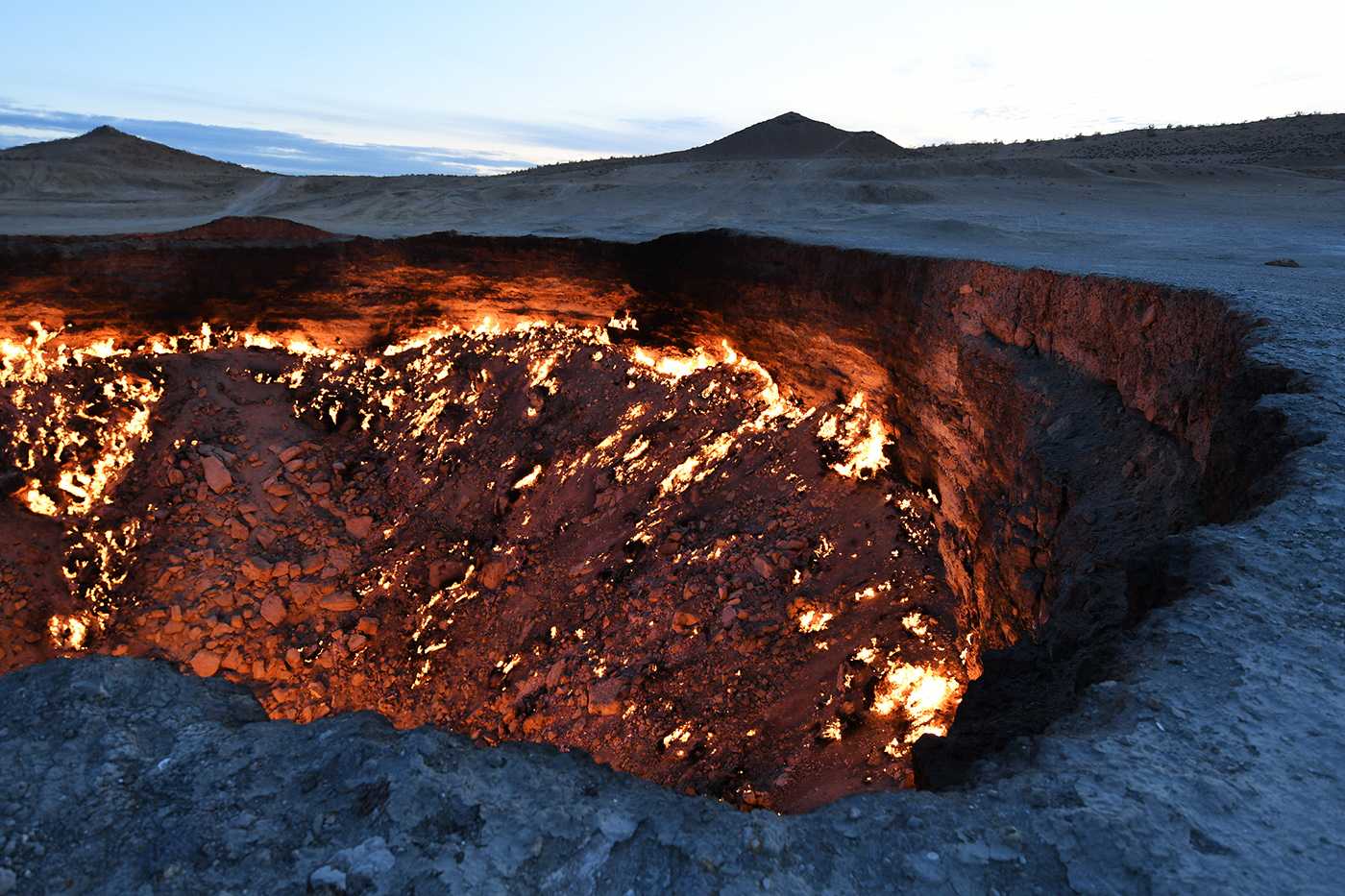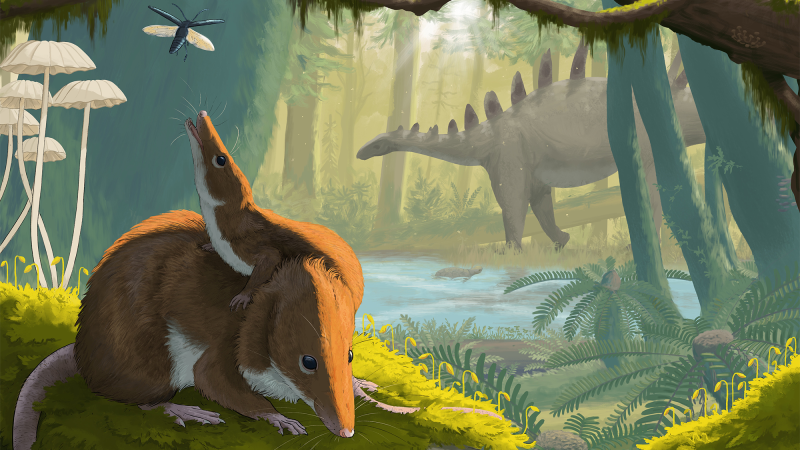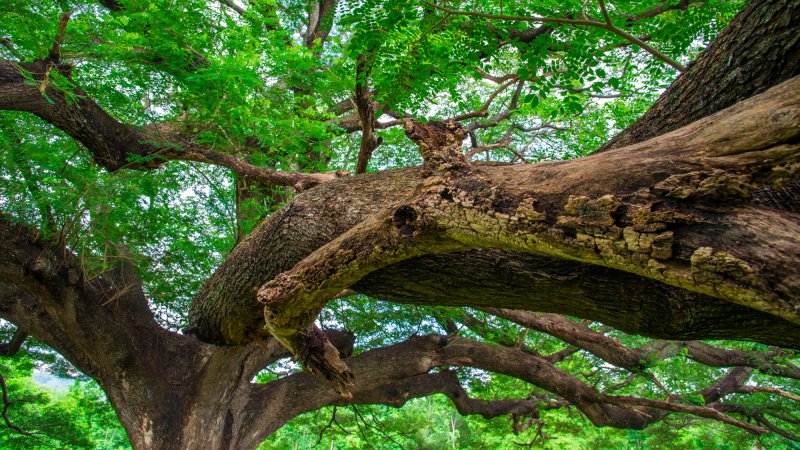Our planet is full of beautiful and awe inspiring geological features. And then there are those that inspire…something else: Perhaps a sense of doom or foreboding. Around the world and throughout history, people have repeatedly referred to various natural sites as entryways into the underworld–think ‘hell’s gate,’ ‘mouth of hell,’ ‘dry riverbed of the netherworld.’
And what’s in a name? Quite a lot, according to Francesco Perono Cacciafoco, a professor of linguistics at Xi’an Jiaotong Liverpool University in China. Perono Cacciafoco studies toponyms, or place names–how people have christened settlements, structures, and natural features through time. Geologic formations are often named for their physical traits, but also in accordance with the context of local culture, ritual, spirituality, and myth, he says. And names can track waves of settlement and colonization, as new people come to new places and overlay their own interpretations onto maps.
[ Related: Earth’s ‘Gateway to Hell’ is growing ]
In Perono Cacciafoco’s experience, he says associations with the underworld are often rooted in how a place looks. “A ‘mysterious’ location, with sinister rocks, fog, natural holes in the ground (think of a karst landscape), thick vegetation, or sudden changes in natural features can easily trigger ‘evocative thoughts’ about ‘other worlds’ and, ultimately, about the ‘underworld’,” he tells Popular Science. But the trend also goes deeper than surface-level. “Names of places considered the gates of the underworld, when reconstructed and explained, tell us a lot about the culture and religion of a civilization,” as well as humanity as whole, he adds.
Many civilizations, going back to ancient–even prehistoric–times and long before the spread of Christianity, had local stories about landscape features leading to the land of the dead or other spirit realms, he says. Some–though fewer–are named after entryways to heaven, he points out. “The ‘gates of hell’ are ‘universal’ (sort of ‘archetypes’) and appear all over the world, independently of geography, culture, religion, language, and tradition,” he says. Because they’re almost always linked to mythic events, “they mark the substance of cultural identity.” Here are a few notable, supposed natural portals to the supernatural abyss.
“Gate” to the underworld – The Batagay Crater in Siberia

The Batagay Crater is the world’s largest permafrost thaw slump. Though it only emerged relatively recently following forest clearing in the mid-1900’s, it’s already garnered a mythic reputation. Among the indigenous Yakut people who inhabit the Siberian taiga surrounding the slump, the expanding pit is known as a “doorway” or “gate” to the underworld for the loud booms that can echo and emanate from the depression as earth shifts. Consequently, it’s been nicknamed the ‘Gateway to Hell’ by both locals and international space agencies alike. Scientists have studied the slump to track its growth as more and more permafrost melts along its margins. Though it’s probably not an entryway into another dimension, it is an unsettling symbol of ongoing climate change.
“Door to Hell” – Darvaza Gas Crater in Turkmenistan

How, exactly, the Darvaza Gas Crater formed isn’t clear. Sometime between the 1960’s and ‘80s, Soviet prospectors were digging around in Turkmenistan’s Karakum desert looking for extractable fossil fuels. Their exploratory drilling efforts accidentally led to the collapse of a rig as earth fell away to reveal a giant pit that continually emits methane among other gasses. Whether lit intentionally, or as an additional accident, the hole has been burning since the mid 20th century. The resulting, noxious, flame-filled depression has a few names, but the most common one, Darvaza literally means “the Gate” in Turkmen. In English, it’s sometimes known as the “Door to Hell.” The reasons are pretty apparent: it’s an inhospitable open pit of fire.
“The Gates of Hell” – Namibia’s Skeleton Coast

By any of its names, Namibia’s Skeleton Coast is foreboding. San or Bushmen people have historically referred to the stretch of desolate desert against ferocious ocean as “The Land God Made in Anger.” Portuguese sailors christened the coastline “The Gates of Hell”, as its rocks and fog wrecked many of their ships, and those who made it to land had to then content with the harsh climate. “Skeleton Coast” comes from the whale bones and ship remains scattered along the shore.
Hell’s Gate National Park in Kenya

Hell’s Gate National Park is a relatively small preserve about 56 miles away from Nairobi in Kenya. It’s home to all sorts of wildlife, from leopards and baboons to rare vultures and hyraxes–and also to five geothermal power stations. The park was established in 1984, but various sources attribute the name to slightly different origins. Some say that the name for the area was bestowed by European explorers Gustav Fischer and Joseph Thomson in 1883, and is derivative of the Dutch term “Hellegat” which means “a clear opening” or “bright passage,” in reference to the Ol Njorowa Gorge or another narrow rift in the high-cliffed plateau that comprises most of the park. While others have their own explanations, related to the eruption of nearby volcano Mt. Longonot and the geothermal activity in the region.
“Mouth of Hell” – Masaya caldera in Nicaragua

Speaking of geothermal activity, many of the places designated entries to the underworld are, unsurprisingly, volcanoes. One of the most astounding and photogenic is Masaya caldera in Nicaragua, in the country’s first and biggest national park. Indigenous inhabitants of the area supposedly considered the volcano a god and made offerings to it. While Spanish colonizers dubbed the fiery mountain “Mouth of Hell” or “Masaya’s Hell” (Infierno de Masaya) after coming upon the caldera’s lava lake in the 16th Century. Masaya is a very active volcano and has been erupting continuously since 2015, releasing gas and steam and bubbling lava. Due to ongoing risk of more explosive activity and because of landslides Masaya National Park was temporarily closed in March.
“Gateway to Hell” – Mount Hekla in Iceland

Another storied volcano that’s been historically referred to as the “Gateway to Hell” is Mount Hekla in Iceland. Amid multiple large eruptions in the Middle Ages, monks and other scholars repeatedly wrote of the mountain as an entrance to the underworld. One 12th Century poem by the monk Benedeit describes it specifically as “the prison of Judas.” Other variations on the name include “Abode of the Condemned.”
“The dry riverbed of the netherworld” – Mt. Osore or Osorezan in Japan

Mt. Osore or Osorezan in Japan literally translates to Horror or Fear Mountain. It is a Buddhist sacred site for its similarities to mythic descriptions of the entrance to the afterlife: Being surrounded by eight other peaks, and containing a river popularly thought to be the “Sanzu River,” or the crossing into the underworld. As a bonus, there’s a lake that’s largely devoid of life, thanks to its acidity. Again, geothermal activity is a central aspect of Mt. Osore, which is also a volcano, although with a less dramatic presentation than Hekla or Masaya. The smell of sulfur permeates, by multiple accounts, and many locations on Osorezan are named in specific reference to hell or death, including Sai no Kawara, which translates to “the dry riverbed of the netherworld” or “riverbed of death.”








